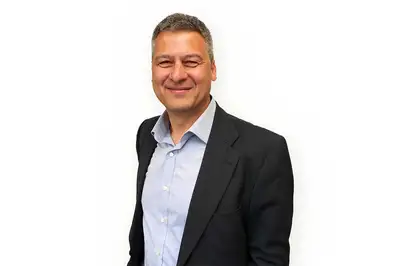
Video footage showed one in three drivers fail to stop at stop signs, even when there is a vehicle approaching from another direction.
After Dr Andrew Gilbey was fined for not stopping at a stop sign, he noticed a lot of other drivers were behaving similarly. The issue stuck in his mind so he decided to collect some emperical evidence.
He found that one in three drivers fail to stop at stop signs, even when there is a vehicle approaching from another direction. He also found that drivers tend to mimic the bad behaviour of others.
The Massey School of Aviation senior lecturer, who has a PhD in Psychology, worked with colleague Dr Kawtar Tani from the Universal College of Learning (UCOL) to film and analyse more than 2000 driver approaches to an intersection with a stop sign
“We ended up with almost 800 observations where there was conflicting cross-traffic, that is, a situation where drivers really should have stopped because there was a car coming the other way,” Dr Gilbey says. “Surprisingly, 32 per cent of drivers didn’t stop. That’s almost one in three drivers who chose not to stop, despite obviously conflicting traffic.”
Drivers tend to mimic bad behaviour
The figures were even worse when there was no obviously conflicting cross-traffic. In this situation, only 17 per cent – or one in six – drivers obeyed the stop sign. Dr Gilbey says these figures are consistent with the findings of earlier overseas studies. However, on closer examination of the footage, he noticed an interesting pattern: drivers were likely to mimic the bad behaviour of the car in front of them.
Driver behaviour was compared in situations where there was no car in front; when the car in front didn’t stop at the intersection; and when the car in front did stop. He found a driver following a car that does not stop was significantly less likely to stop (only 11 per cent of drivers in this situation stopped, compared to 17 per cent who stopped when there was no car in front of them). Interestingly, if the car in front did stop, it made no difference to the following driver’s behaviour.
“Psychologists know people mimic other people, but they’re still not sure how much conscious thought is involved,” Dr Gilbey says. “In this case there certainly seems to be conscious decision making, otherwise you would expect drivers to mimic the good behaviour as well.
“People are probably thinking, ‘If I stop, I’m going to use extra petrol and my journey will take longer. The person in front of me didn’t stop, so why should I?’”

School of Aviation researcher Dr Andrew Gilbey.
It's a problem that's only going to get worse
Dr Gilbey says his main concern is the findings suggest non-compliance at stop signs will probably increase over time.
“Every day people are not stopping at stop signs. Other people are then mimicking their behaviour and becoming bad examples for yet more drivers. You only need a small effect size for this problem to get out of hand.”
Summary of key findings:
- When there was no obvious conflicting traffic, only 17% of drivers stopped.
- Even when there was obviously conflicting traffic, 32% still did not stop. That is, almost one in three drivers did not stop when conflicting traffic was obvious.
- When the driver in front did not stop, the driver following was significantly less likely to stop.
- When the driver in front did stop, it made no difference to the following driver’s behaviour.
- This suggests that stop sign compliance will get worse over time.